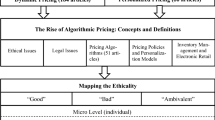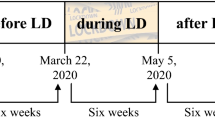Abstract
Today, informational structure is organized in such a way that sellers can easily employ the various capabilities of social networks, such as the analysis of positive and negative tendencies of neighbours, to maximize diffusion in the network. Therefore, in this paper we employ this approach to introduce a novel mathematical product pricing model for a monopoly product in a non-competitive environment and in the presence of heterogeneous customers. In this model, all customers are divided into various groups based on their preferences for the price, quality and need time for the product demand and also the positive and negative influences of neighbours. So, it seems customers utilize a multi-criteria decision-making model for buying a product. When a customer buys a product and additionally, persuades its neighbours to also buy the product they will receive a referral bonus from the seller. Meanwhile, the intensity of relations between neighbours in the network is incorporated into the model qualitatively. Finally, hardness of the problem justifies application of a genetic algorithm for solving the proposed pricing model and real-world dataset is used to conduct a case study that verifies its applicability.







Similar content being viewed by others
Notes
Influence and exploit in which a product is offered to a group of customers for free or at minimum price with the aim of taking advantage of the remaining group of customers.
In the social network literature, homophily (heterophily) and assortativity (disassortativity) are applied to indicate positive (negative) correlation between the features of neighbours.
Intensity of relations is the edge weight. It is a qualitative value among strong, mediocre and weak that the new individual scores to indicate their relation with the sender of the form.
References
Tatikonda LU (2013) The hidden costs of customer dissatisfaction. Manag Account Q 14:34
Mansfield E (1961) Technical change and the rate of imitation. Econometrica 29:741–766
Fourt LA, Woodlock JW (1960) Early prediction of market success for new grocery products. J Mark 25:31–38
Bass FM (1969) A new-product growth model for consumer durables. Manag Sci 15:215–227
Midgley DF, Dowling GR (1987) Innovativeness: the concept and its measurement. J Consum Res 4:229–242
Shi M (2003) Social network-based discriminatory pricing strategy. Mark Lett 14:239–256
Hartline J, Mirrokni V, Sundararajan M (2008) Optimal marketing strategies over social networks. In: Proceedings of the 17th international conference on World Wide Web, pp 189–198
Arthur D, Motwani R, Sharma A, Xu Y (2009) Pricing strategies for viral marketing on social networks. In: International workshop on internet and network economics, pp 101–112
Akhlaghpour H, Ghodsi M, Haghpanah N, Mirrokni VS, Mahini H, Nikzad A (2010) Optimal iterative pricing over social networks. In: International workshop on internet and network economics, pp 415–423
Hande P, Chiang M, Calderbank R, Zhang J (2010) Pricing under constraints in access networks: Revenue maximization and congestion management. In: 2010 Proceedings IEEE of the INFOCOM, pp 1–9
Mirrokni VS, Roch S, Sundararajan M (2012) On fixed-price marketing for goods with positive network externalities. In: International workshop on internet and network economics, pp 532–538
Ehsani S, Ghodsi M, Khajenezhad A, Mahini H, Nikzad A (2012) Optimal online pricing with network externalities. Inf Process Lett 112:118–123
Nejad MG, Estelami H (2012) Pricing financial services innovations. J Financ Serv Mark 17:120–134
Campbell A (2012) Word of mouth and percolation in social networks. Am Econ Rev 3
Haghpanah N, Immorlica N, Mirrokni V, Munagala K (2013) Optimal auctions with positive network externalities. ACM Trans Econ Comput 1:13
Alon N, Mansour Y, Tenneholtz M (2013) Differential pricing with inequity aversion in social networks. In: Proceedings of the fourteenth ACM conference on electronic commerce, pp 9–24
Nejad MG (2013) Optimal pricing for the growth of innovations with direct network externalities: an agent-based approach. J Prod Brand Manag 22:180–190
Fotakis D, Siminelakis P (2014) On the efficiency of influence-and-exploit strategies for revenue maximization under positive externalities. Theor Comput Sci 539:68–86
Zhang B, Qian Z, Li W, Lu S (2015) Pricing strategies for maximizing viral advertising in social networks. In: International conference on database systems for advanced applications, pp 418–434
Ajorlou A, Jadbabaie A, Kakhbod A (2015) Dynamic pricing in social networks: the word of mouth effect. Available at SSRN 2495509
Crapis D, Ifrach B, Maglaras C, Scarsini M (2015) Monopoly pricing in the presence of social learning. Available at SSRN 1957924
Cao Z, Chen X, Hu X, Wang C (2016) Approximation algorithms for pricing with negative network externalities. J Comb Optim 33(2):681–712
Amanatidis G, Markakis E, Sornat K (2016) Inequity aversion pricing over social networks: approximation algorithms and hardness results. arXiv preprint arXiv:1606.06664
Nejad MG, Kabadayi S (2016) Optimal introductory pricing for new financial services. J Financ Serv Mark 21:34–50
Zubcsek PP, Phan TQ, Lu X (2016) Homophily and influence: pricing to harness word-of-mouth on social networks. Available at SSRN 2562167
Shin E (2015) Monopoly pricing and diffusion of (social) network goods. Available at SSRN 2372022
Akram M, Sarwar M (2017) Novel applications of m-polar fuzzy competition graphs in decision support system. Neural Comput Appl 1–21. https://doi.org/10.1007/s00521-017-2894-y
Badiee A, Ghazanfari M (2018) A monopoly pricing model for diffusion maximization based on heterogeneous nodes and negative network externalities (case study: a novel product). Decis Sci Lett 7(3):287–300
Welch WJ (1982) Algorithmic complexity: three NP-hard problems in computational statistics. J Stat Comput Simul 15(1):17–25
Holland JH (1992) Adaptation in natural and artificial systems: an introductory analysis with applications to biology, control, and artificial intelligence. MIT press, Cambridge
Kermani MAMA et al (2016) Introducing a procedure for developing a novel centrality measure (sociability centrality) for social networks using TOPSIS method and genetic algorithm. Comput Hum Behav 56:295–305
Eiben ÁE, Smit SK (2011) Evolutionary algorithm parameters and methods to tune them. In: Hamadi Y, Monfroy E, Saubion F (eds) Autonomous search. Springer, Berlin, pp 15–36
Acknowledgements
The authors would like to acknowledge the helpful discussions and financial support from the Iranian E-Commerce Scientific Association.
Author information
Authors and Affiliations
Corresponding author
Ethics declarations
Conflict of interest
There is no conflict of interest related to the publication of this manuscript.
Rights and permissions
About this article
Cite this article
Badiee, A., Ghazanfari, M. Development of a monopoly pricing model for diffusion maximization in fuzzy weighted social networks with negative externalities of heterogeneous nodes using a case study. Neural Comput & Applic 31, 6287–6301 (2019). https://doi.org/10.1007/s00521-018-3425-1
Received:
Accepted:
Published:
Issue Date:
DOI: https://doi.org/10.1007/s00521-018-3425-1




